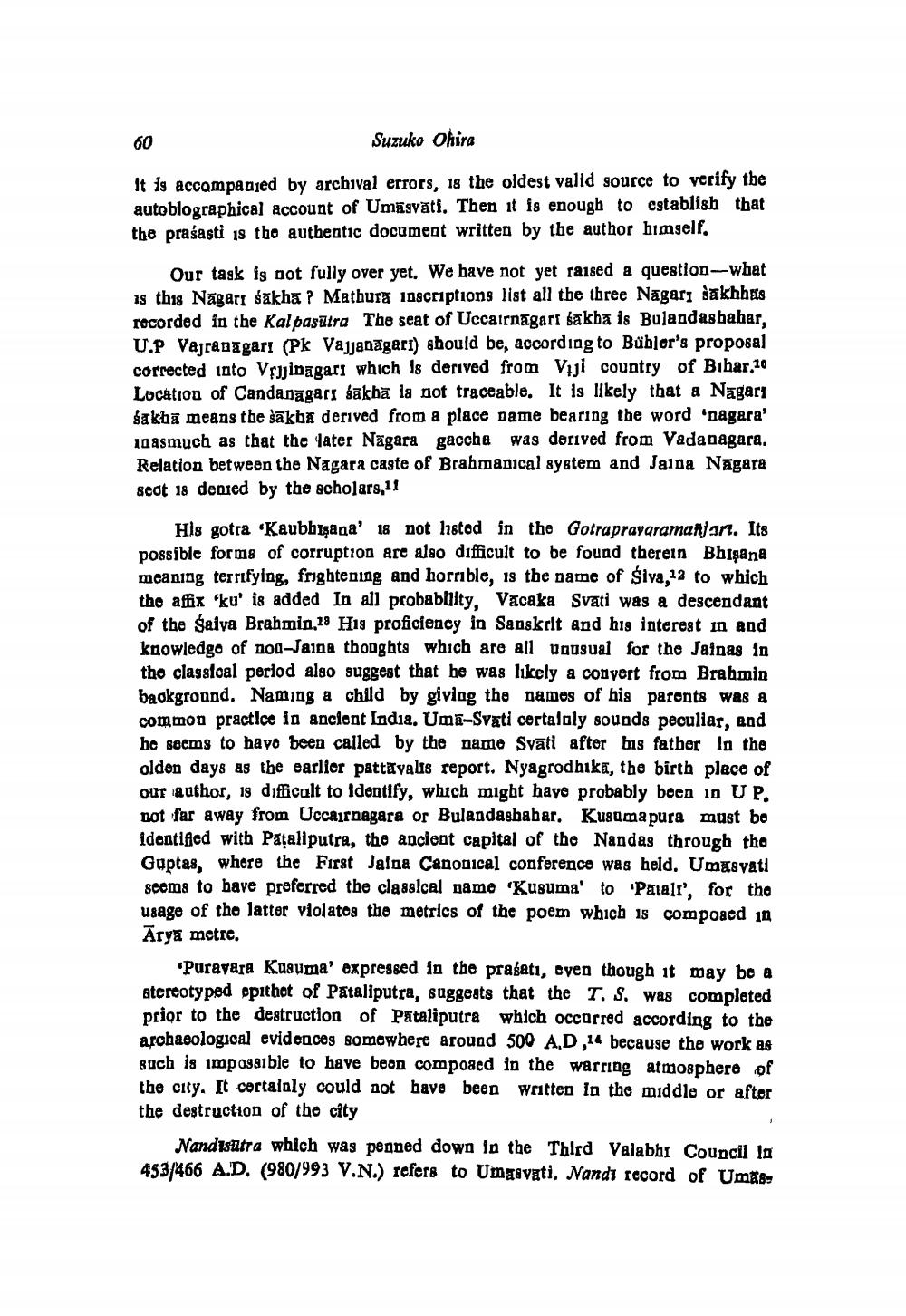________________
60
Suzuko Ohira
It is accompanjed by archival errors, is the oldest valid source to verify the autoblographical account of Umäsvati. Then it is enough to establish that the praśasti is the authentic document written by the author himself,
Our task is not fully over yet. We have not yet raised a question--what is thig Nagarı sākha ? Matburg 1nscriptions list all the three Nagar, sakhhas recorded in the Kal pasūtra The seat of Uccarnagari sakba is Bulandashahar, U.P Vajrapagarı (Pk Vajjanagari) should be, according to Bühler's proposal corrected into Vrijinagari which is derived from Vuji country of Bihar,10 Location of Candanagari sakba la not traceable. It is likely that a Nagari sakha means the sakba derived from a place name bearing the word 'nagara' 10 asmuch as that the later Nagara gaccha was derived from Vadanagara. Relation between the Nagara caste of Brahmanical system and Jalga Nagara sect 18 denied by the scholars,11
His gotra Kaubbişaqa' 18 not listed in the Gotraprayaramanjan. Its possible forms of corruption are also difficult to be found therein Bhişana meaning terrifying, frightening and horrible, is the name of Siva,12 to which the affix 'ku' is added In all probability, Vacaka Svati was a descendant of the Salva Brahmin.18 His proficiency in Sanskrit and hig interest in and knowledgo of non-Jaipa thoughts which are all unusual for the Jalnas in the classical period also suggest that he was likely a convert from Brahmin baokground, Naming a child by giving the names of his parents was a common practice in ancient India. Umā-Svæti cortaloly sounds peculiar, and he seems to hayo been called by the name Svati after bis father in the olden days as the earlier pattavalis report. Nyagrodhika, the birth place of our author, 19 difficult to identify, which might have probably been 10 UP. not far away from Uccairnagara or Bulandashabar. Kusuma pura must be Identified with Pataliputra, the ancient capital of the Nandas through the Guptas, whore the First Jalna Canonical conference was held. Umasvati seems to have preferred the classical name 'Kusuma' to 'Palali', for the usage of the latter violatos the metrics of the poem which is compoaed 10 Arya metre.
Purayara Kuauma expressed in the pragati, Gyen though it may be a atereotyped cpithet of Pataliputra, suggests that the T. S. was completed prior to the destruction of Pataliputra which occurred according to the archaeological evidences somowhere around 500 A,D,14 because the work as such is impogaible to have beon composed in the warring atmosphere of the city. It certainly could not have been written in the middle or after the destruction of the city
Nandisutra which was penned down in the Third Valabhr Council in 453/466 A.D. (980/993 V.N.) refers to Umaavati, Nandi record of Umas,




